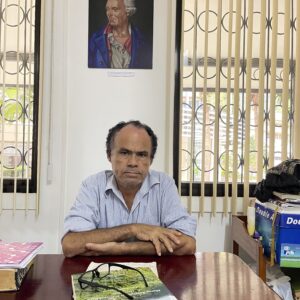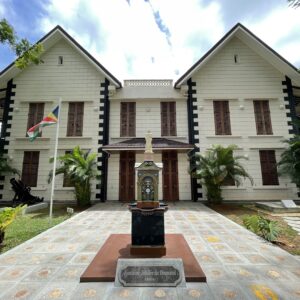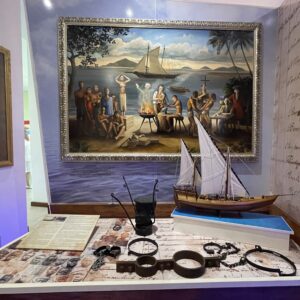Walking through Victoria indeed feels like strolling through a colorful town from some children’s game, as everything is miniature, tidy, and neat
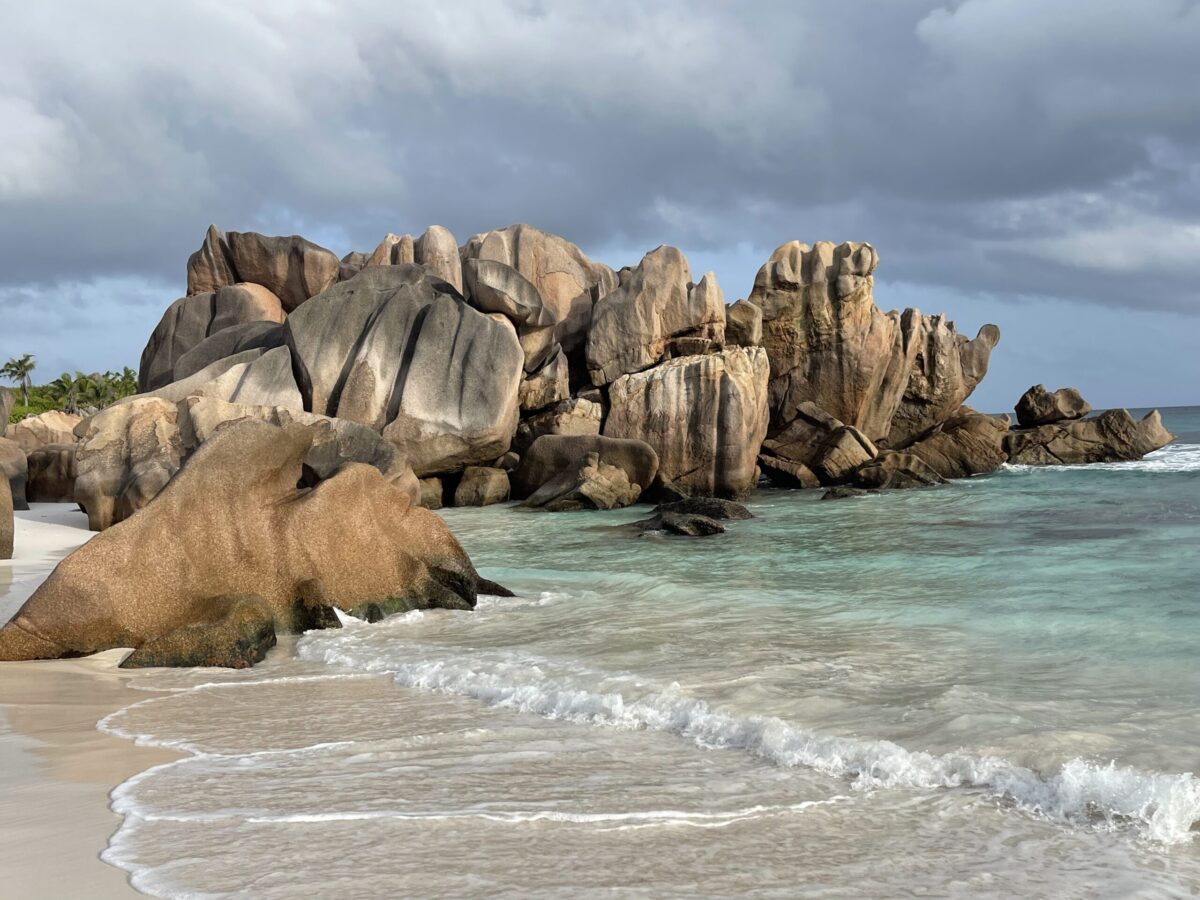 The largest city and capital of Seychelles, Victoria, is also one of the smallest capital cities in the world. With nearly 27,000 people, it is almost twice as small as Pirot. Seychelles, in fact, is the smallest African country by population. Victoria is a charming town with the Seychellois ‘Big Ben’ located in its center. No matter which direction you head from the city center, you will exit the capital in just a few minutes! Despite its size, Victoria is bustling with activity and full of attractions.
The largest city and capital of Seychelles, Victoria, is also one of the smallest capital cities in the world. With nearly 27,000 people, it is almost twice as small as Pirot. Seychelles, in fact, is the smallest African country by population. Victoria is a charming town with the Seychellois ‘Big Ben’ located in its center. No matter which direction you head from the city center, you will exit the capital in just a few minutes! Despite its size, Victoria is bustling with activity and full of attractions.
‘Big Ben’ is one of these attractions, right in the epicenter, the zero point of Victoria. The gray English clock tower – a Seychellois landmark! It was brought from England back in 1903, with a weather vane on top, and resembles the famous clock of the British Parliament. Placed on the main square and the most prominent roundabout in the country, it has become a symbol of Seychelles. Many urban legends have sprung up about it, the most famous being that when the tower was transported across the ocean, the clock mechanism was damaged, and craftsmen were urgently brought to the transoceanic ship to avoid the embarrassment of the empire in its colony.
Cars buzz around the famous clock from all directions, which cannot be said for any other place in this country. For the locals, even a five-minute traffic jam is a real attraction! The noise of the traffic drowns out the clock’s strong chime that rings twice every sixty minutes.
“I feel like I visited a town made of LEGO bricks,” one tourist tells me, and I realize that walking through Victoria indeed feels like strolling through a colorful town from some children’s game, as everything is miniature, tidy, and neat.
Victoria was founded by the French in 1778, but the founders lacked inspiration for naming it, so they called the place – “Settlement.” The English were inspired in 1841 and renamed the city after Queen Victoria, making it the center of their colony. They had the same inspiration for another “only” 147 cities around the world – that’s how many namesakes this city has, from Canada and Mexico to Australia.
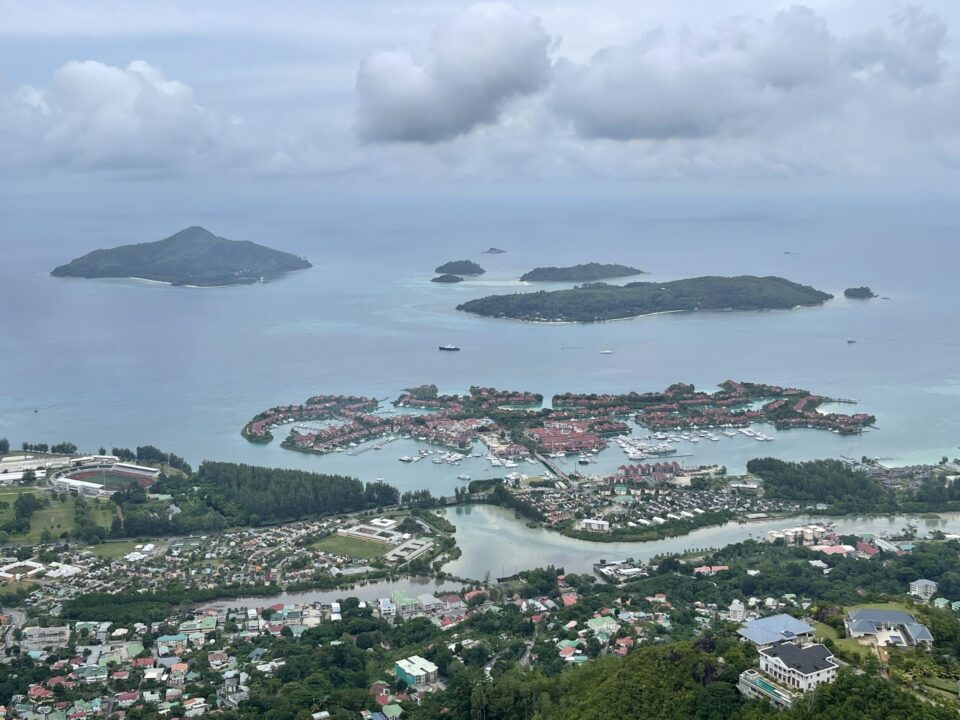 Seychelles, an archipelagic country composed solely of islands, has no other port capable of accommodating large transoceanic ships! Victoria also houses the only international airport, built by the English and personally opened by Queen Elizabeth II in 1972. Until then, the only way to reach Seychelles was by ferry, which took several days and started its journey only once a week from Kenya or Madagascar. The locals say that everything changed with the advent of flights – previously, visitors and locals alike couldn’t rush anywhere, no matter how much they wanted to.
Seychelles, an archipelagic country composed solely of islands, has no other port capable of accommodating large transoceanic ships! Victoria also houses the only international airport, built by the English and personally opened by Queen Elizabeth II in 1972. Until then, the only way to reach Seychelles was by ferry, which took several days and started its journey only once a week from Kenya or Madagascar. The locals say that everything changed with the advent of flights – previously, visitors and locals alike couldn’t rush anywhere, no matter how much they wanted to.
Seychelles is an archipelagic country composed solely of islands
“If someone was really in a hurry, they could only swim across the Indian Ocean,” they told me nostalgically, recalling those not-so-distant times. Since Somalia is not far away, and Seychelles is an ally of the United States, this airport is also a center for American military activities in Somalia and anti-piracy operations throughout the Indian Ocean. The locals told me they were astonished when a drone crashed on the airport runway in 2011, and it has also happened that fishermen spot unusual aircraft plunging into the turquoise sea near the endless sandy beaches.
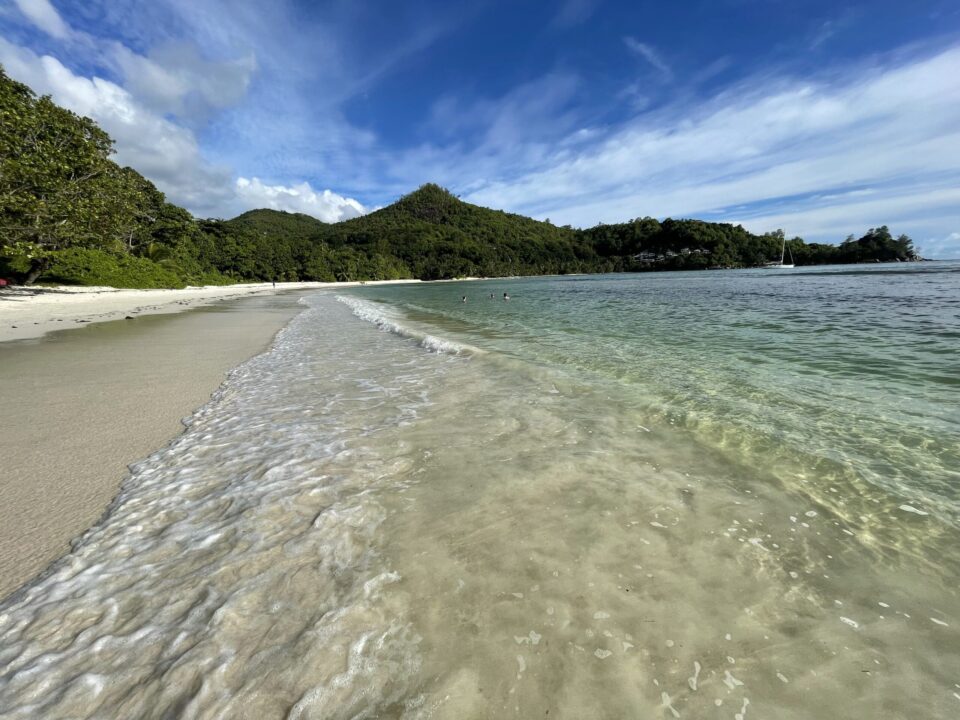 While traveling by boat to the nearby island of Praslin, I realized how arduous island-hopping could be. The waves were high, though the sailors assured me it wasn’t as bad as it could get. Even so, more than half of the fifty or so passengers were vomiting, and ended up in the bathroom or on the floor, cursing the day they were born and, especially, the day they arrived in Seychelles. Only then does it become clear how crucial airports are in a country with less than 500 kilometers of roads, where sea travel can be not only grueling due to rough seas but also expensive and time-consuming, taking days to reach many remote islands.
While traveling by boat to the nearby island of Praslin, I realized how arduous island-hopping could be. The waves were high, though the sailors assured me it wasn’t as bad as it could get. Even so, more than half of the fifty or so passengers were vomiting, and ended up in the bathroom or on the floor, cursing the day they were born and, especially, the day they arrived in Seychelles. Only then does it become clear how crucial airports are in a country with less than 500 kilometers of roads, where sea travel can be not only grueling due to rough seas but also expensive and time-consuming, taking days to reach many remote islands.
Therefore, many small planes and helicopters from this airport service the extremely small settlements and hotels across the archipelago. Seychelles had to accept painful compromises in agreements with the British to get this lifeline built.
You don’t need a visa, just bring your passport and a smile, and see you in Victoria!
It was especially interesting to be a passenger at the airport on November 25, 1981. On that day, rebels who tried to seize power arrived at border control on civilian planes. They initially took over the airport buildings, detained around seventy passengers who were there, and then awaited the landing of an Indian plane, “capturing” the aircraft with 65 passengers and 13 crew members. These were the most tumultuous days of the newly established country on an island surrounded by rough seas, ending with the rebels’ defeat. The coup failed, but the story of what a passenger can experience when caught at the Seychelles airport at the wrong time became legendary.
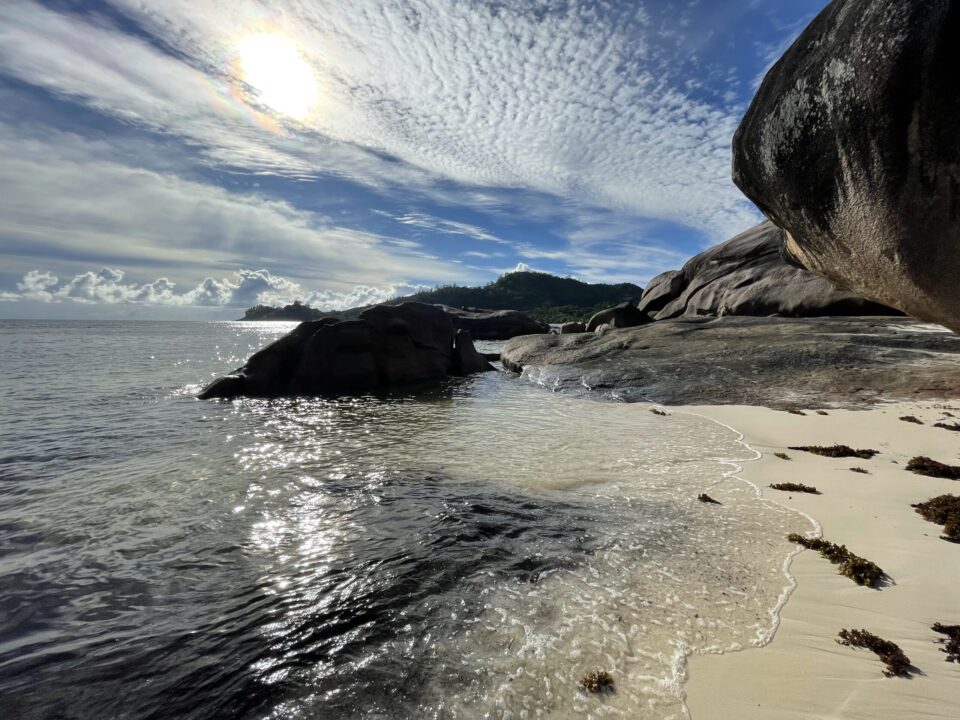 The French history of the capital is best reflected in a hundred-year-old restaurant and the French School. Everything exudes space, warmth, and protection from sudden, powerful rains – a high veranda surrounds the entire building. On the first floor of the old but modernly refurbished building is a French media library, with a special cabinet full of books about Seychelles and the countries of the Indian Ocean. Among Asterix, Obelix, and other children’s books, I unusually quickly found one dedicated to the First World War with text about Serbia. Those few words about our country in a picture book brought from France are the only mention of us among thousands of books; only in a few atlases can traces of our country be found. Among the numerous French books, I noticed Spinoza, Plato, and an entire section of philosophy. So, in tropical homes and on beaches, serious reading material is also consumed. A kind elderly librarian of French origin pointed out the genealogy books of all the families living in Seychelles. Given that this country has existed for only two hundred and fifty years and that all its inhabitants are actually settlers from Africa or Europe, there are unusually detailed records of the ancestors of almost every resident. Since the National Library of Seychelles has been closed for years due to problems with humidity and insects, this is the largest book collection in Seychelles accessible to the public.
The French history of the capital is best reflected in a hundred-year-old restaurant and the French School. Everything exudes space, warmth, and protection from sudden, powerful rains – a high veranda surrounds the entire building. On the first floor of the old but modernly refurbished building is a French media library, with a special cabinet full of books about Seychelles and the countries of the Indian Ocean. Among Asterix, Obelix, and other children’s books, I unusually quickly found one dedicated to the First World War with text about Serbia. Those few words about our country in a picture book brought from France are the only mention of us among thousands of books; only in a few atlases can traces of our country be found. Among the numerous French books, I noticed Spinoza, Plato, and an entire section of philosophy. So, in tropical homes and on beaches, serious reading material is also consumed. A kind elderly librarian of French origin pointed out the genealogy books of all the families living in Seychelles. Given that this country has existed for only two hundred and fifty years and that all its inhabitants are actually settlers from Africa or Europe, there are unusually detailed records of the ancestors of almost every resident. Since the National Library of Seychelles has been closed for years due to problems with humidity and insects, this is the largest book collection in Seychelles accessible to the public.
A luxurious restaurant occupies the entire second floor of the beautiful building. The tables are arranged in such a way that on one side, you can see the interior of the building and the bookshelves, while the other side is open, leading to the veranda overflowing with tropical plants and palm leaves. This is the main gathering place for lunches and meetings of the Seychellois elite, so I came here at the invitation of the prominent Seychellois writer and member of Adligat, Glen Burridge, to enjoy quality food and observe how the Seychellois, just like the foreigners who come here, consider lunch the main event of the day.
The moutya, a traditional drum that is heated over a fire before playing, recently protected by UNESCO as an intangible cultural heritage of humanity
The market is the epicenter of every town, and in Victoria, the market is a city within a city. It spills out from the enclosed, covered area into the streets, flowing like a river through the alleys with fruits, vegetables, fish, clothing, and other goods navigating through Victoria and engulfing everyone who passes by. Even if I didn’t buy anything, I feel how the abundance of goods leaves an impression on me; the sights of fruits and fish stay with me even when I move away. For this small town, the market seems enormous, yet, like everything else here, it is actually miniature! Just a few steps and I emerged from the chaos, already missing the hundreds of types of fish, bananas, and palm fruits. What the market lacks in size, it makes up for with the strong smell of fresh fish and the bustling vendors: viewed from a bird ’ s-eye perspective, this is the liveliest place for thousands of kilometers around, surrounded by the endless ocean.
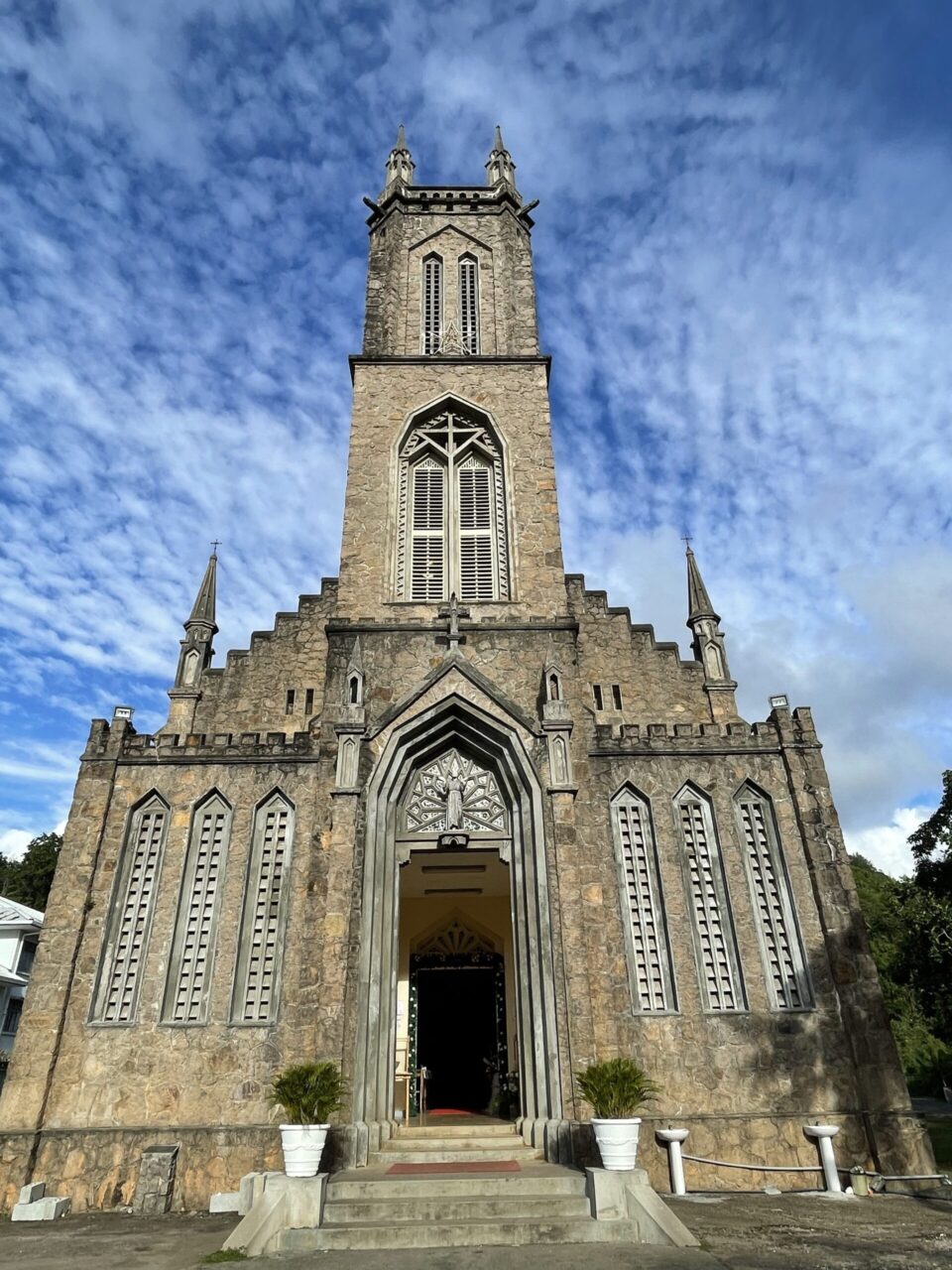 Occasionally, a large white bird nibbles on a fish from a careless vendor. A small fountain refreshes visitors as they browse pumpkins, zucchinis, and broccoli mixed with vegetables rarely seen elsewhere or at least ones I have never seen, in spiky and star-shaped forms. Red-yellow fish are especially numerous, arranged on stalls like a Roman mosaic, and I regret not having the facilities in my hotel to fry and try them. Many seafood items are much larger than I’ve ever seen in Belgrade: all caught nearby, some even as recently as last night or early dawn, and brought to the stalls this morning. The market starts operating at four in the morning when they say it is particularly crowded, but I didn’t have the strength to wake up that early and check if it was true. Its name is dedicated to Sir Selwyn Clarke, a Briton who came to Seychelles from Hong Kong and served as its governor. An unusual and hard-to-remember name stands out to foreigners and reminds them of the brave Briton who, during the toughest times of World War II, ran a hospital in Hong Kong, helped the sick and war prisoners, only to be imprisoned and tortured himself, even sentenced to death before being pardoned. His life shows the volatility of times when one can go from power to prison expecting death and end a career as the governor of paradise islands, whose main market, in a sea of colors, full of spices, fruits, vegetables, and fish, reminds every local and passerby of what he did and how he lived…
Occasionally, a large white bird nibbles on a fish from a careless vendor. A small fountain refreshes visitors as they browse pumpkins, zucchinis, and broccoli mixed with vegetables rarely seen elsewhere or at least ones I have never seen, in spiky and star-shaped forms. Red-yellow fish are especially numerous, arranged on stalls like a Roman mosaic, and I regret not having the facilities in my hotel to fry and try them. Many seafood items are much larger than I’ve ever seen in Belgrade: all caught nearby, some even as recently as last night or early dawn, and brought to the stalls this morning. The market starts operating at four in the morning when they say it is particularly crowded, but I didn’t have the strength to wake up that early and check if it was true. Its name is dedicated to Sir Selwyn Clarke, a Briton who came to Seychelles from Hong Kong and served as its governor. An unusual and hard-to-remember name stands out to foreigners and reminds them of the brave Briton who, during the toughest times of World War II, ran a hospital in Hong Kong, helped the sick and war prisoners, only to be imprisoned and tortured himself, even sentenced to death before being pardoned. His life shows the volatility of times when one can go from power to prison expecting death and end a career as the governor of paradise islands, whose main market, in a sea of colors, full of spices, fruits, vegetables, and fish, reminds every local and passerby of what he did and how he lived…
When I visited Victoria, the mayor was David Andre, now the Secretary-General of the Seychelles Institute of Culture, Heritage, and the Arts. Mr. Andre served two terms as mayor, warmly opened the doors of the town hall for me, and gifted several valuable books to Adligat’s Museum of Books and Travel. Even the town hall is modest, resembling a hacienda in the mountains, with a spacious porch, bathed in the Seychellois sun.
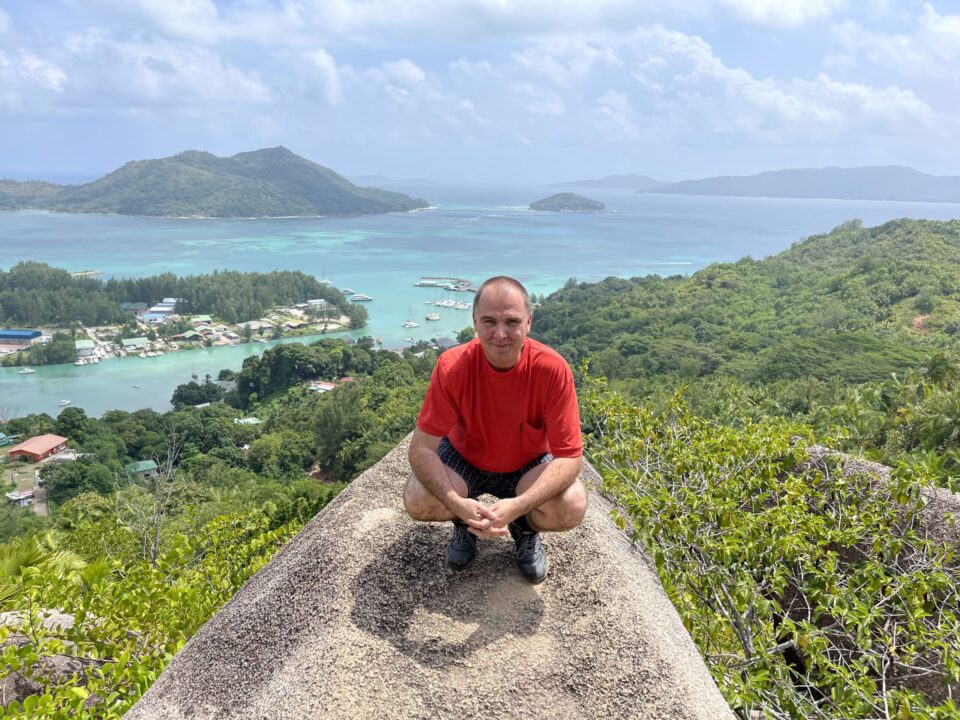 “We are a small country in the middle of the ocean. It is important for us that people from all meridians know that we exist and that we have many things worthy of the world’s attention, which we want to share with others. One must experience the island culture. Although we are small, we have a rich heritage, we have outstanding ecological projects, we are a multicultural community living in harmony and can be an example of how people can live together despite differences. We have maintained friendly relations with Serbia since the early days of our independence when we were supported by Yugoslavia. Everyone is welcome in Seychelles; you don’t need a visa, just bring your passport and a smile, and see you in Victoria!” says David Andre.
“We are a small country in the middle of the ocean. It is important for us that people from all meridians know that we exist and that we have many things worthy of the world’s attention, which we want to share with others. One must experience the island culture. Although we are small, we have a rich heritage, we have outstanding ecological projects, we are a multicultural community living in harmony and can be an example of how people can live together despite differences. We have maintained friendly relations with Serbia since the early days of our independence when we were supported by Yugoslavia. Everyone is welcome in Seychelles; you don’t need a visa, just bring your passport and a smile, and see you in Victoria!” says David Andre.
Mr. Andre directed me to the National Museum, where I was greeted by the director, Beryl Ondiek. She soon introduced me to Tony Mathiot, their most significant historian, who guided me through the exhibition of the small but most important museum in Seychelles. The story quickly unfolded about medicinal plants and African healing traditions. On the screen, I saw how they play the moutya, a traditional drum that is heated over a fire before playing, recently protected by UNESCO as an intangible cultural heritage of humanity.
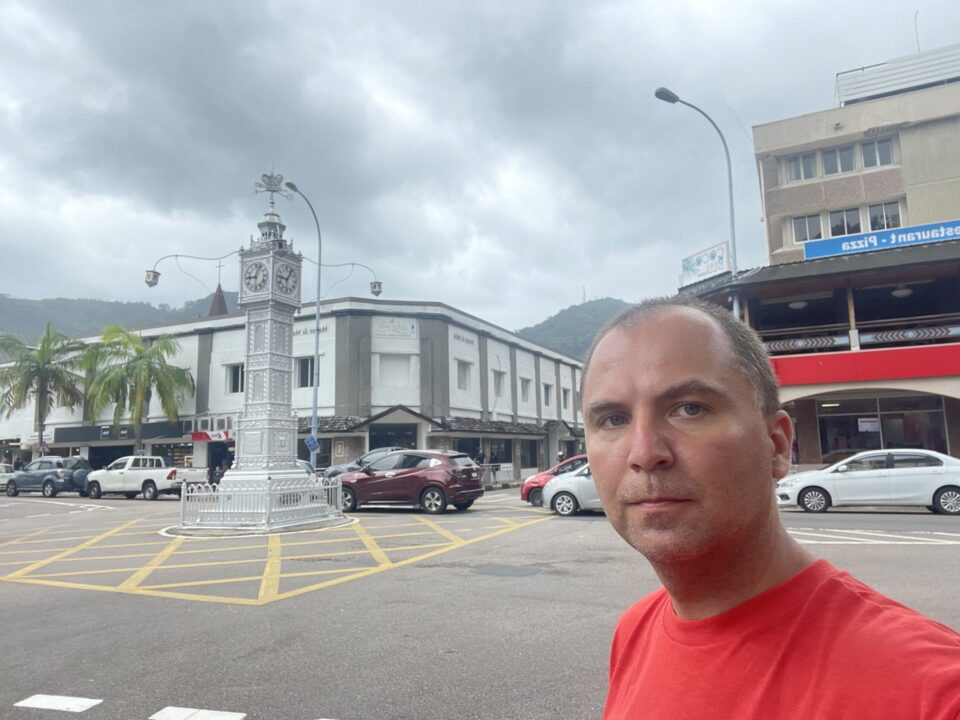 “Here is the oldest map showing Seychelles from 1517,” my new friend Tony said to me, then led me to the oldest human-made object in Seychelles – the “Ownership Stone,” the coat of arms of France carved by the first colonizers above present-day Victoria when they arrived at the uninhabited islands back in 1756.
“Here is the oldest map showing Seychelles from 1517,” my new friend Tony said to me, then led me to the oldest human-made object in Seychelles – the “Ownership Stone,” the coat of arms of France carved by the first colonizers above present-day Victoria when they arrived at the uninhabited islands back in 1756.
There are also replicas of the ships that the first colonists used to come to Seychelles, some original pieces of weaponry, and many ethnographic and handmade items. All of this is similar to the rest of Africa and Europe, as it comes from there.
Today’s inhabitants are a mix of former slaves and slave owners, of all skin colors
Terrifying are the original shackles in which slaves were confined and drawings of slaves in severe agony, with wounds from whipping and beatings. But Seychelles is a land of freedom – when the British banned slavery in 1835, Seychelles was among the first colonies where slaves were immediately freed, a total of 6,521 souls, while the total population on the islands was 7,500! In the following decades, the British would intercept Arab ships with slaves and bring them to Seychelles – by 1874, 2,816 freed slaves would find freedom in Victoria. Today’s inhabitants are a mix of former slaves and slave owners, of all skin colors, from about ten countries in Africa and Europe. They live together, in peace and love.
As the bust of Queen Victoria watches over me in the museum, I think that this is not a city that will leave a visitor speechless or amaze you with anything in particular. It is a city that slowly gets under your skin, to which you return after swimming on the most beautiful beaches, after walks on the high surrounding hills full of exotic plants and flowers rarely seen anywhere else in the world. It is a city loved for no specific reason, beautiful and special in its miniature form, full of small wonders, like this modest museum, on every corner.
All Photos By: Viktor Lazić
